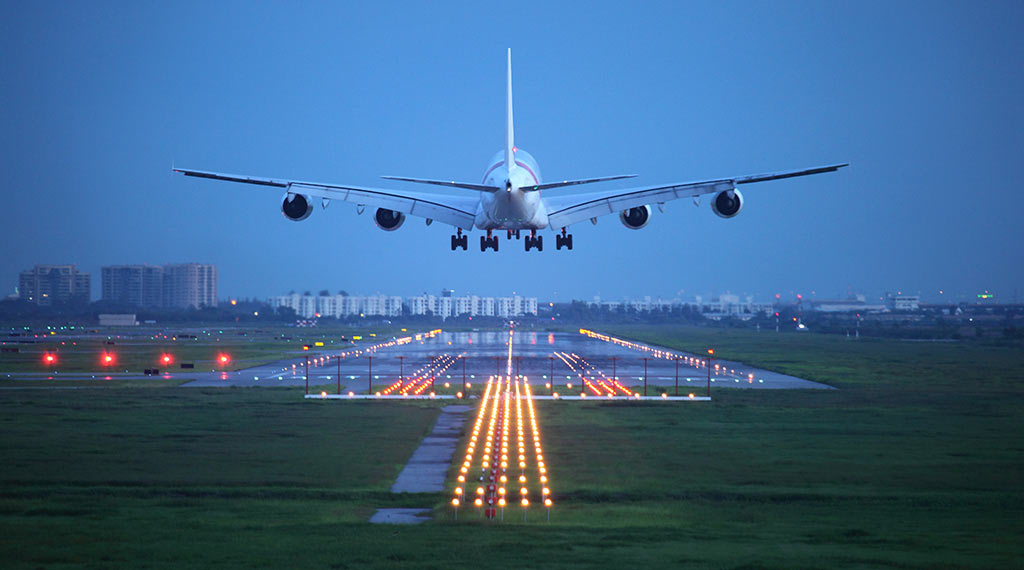What happened in the Abha Airport attack?

A Houthi drone was fired at the Abha Airport on Thursday, February 10. Saudi Arabia said that it shot the drone down but that twelve people, some of them airport workers, others travelers from different countries, were hurt “by shrapnel.”
The Houthis confirmed they had fired a Qasef-2 drone that hit a “military target” at the airport.
The Qasef-2K is a loitering munition powered by a gasoline engine and is based on, if not the same as, the Iranian Ababil drone manufactured by the Iran Aircraft Manufacturing Industrial Company (HESA). It carries a 30kg (66 pound) warhead. The drone is slow flying. These drones have been spread around the Middle East by Iran. Hezbollah-operated drones of this type were shot down by Israeli F-16s. Three drones were launched against the oil tanker M/T Mercer Street off the coast of Oman on July 29th. Two of the drones missed the vessel, but the third drone crashed into the ship’s bridge, killing its Romanian national captain and a British national bodyguard. M/T Mercer Street was owned by billionaire shipping magnate Eyal Ofer, an Israeli.
Abha is purely a civilian airport, but it has been hit by drones and cruise missiles numerous times, going back to 2017.
Saudi Arabia has not said what shot down the Houthi drone this time. Photos show some parts of the drone that are recognizable and survived. This includes the Chinese 2 cylinder gasoline engine (probably the model DLE-111 or one quite similar) and the forward canard (made from fiberglass).
There is one video available on Twitter (https://twitter.com/i/status/1491748758085844997) but nowhere else that shows an explosion at the airport taken from two security cameras. In the first part of the video, if one looks carefully, one can see something streaking close to the airport and then exploding. The second part of the video by the second security camera shows just the explosion, although more clearly than the first.
If the Twitter video is as represented and shows the explosion, there are certain conclusions that can be drawn. The image of something streaking in cannot be a drone as it is traveling far too fast. Instead it looks like a rocket or small missile of some sort (although it is barely visible) and then the explosion follows immediately.
This suggests that the explosion and those wounded were hit by debris from an air defense missile or from the structure that was hit and not by the drone itself, which fell outside the airport after being hit.
Saudi Arabia has not said what types of air defense systems protect the Abha airport. The two most likely candidates are the Patriot air defense system and the Shahine (Crotale) air defense system. Given the angle of the incoming missile (if that is what it is), it is unlikely to be a Patriot, which anyway would explode in the air if it missed its target.
The Crotale (Shahine in Saudi Arabia) is a short range air defense missile system made in France. It has an explosive warhead that weighs 13kg (28.6 pounds). Crotale is available in land and naval versions (the land version can be mounted on a wheeled vehicle or on a tracked vehicle).
If the Shahine was in fact used, and the streaking image is a Crotale missile that missed the target and then exploded, then the twelve victims were not hit by shrapnel from the drone but shrapnel from the missile or from debris from the structure that was hit. Interceptor missiles use what are called fragmentation warheads (if they are not hit to kill missiles) which are stuffed with steel pellets designed to destroy aircraft and missiles.
An alternative, but also plausible scenario is that a Saudi fighter aircraft tried to intercept the Houth drone, but one of its air to air missiles missed. Had the Saudi aircraft been higher than the drone when it fired, the angle of the incoming “streak” in the video can also be explained by an air to air missile (most likely a US Sidewinder) from the Saudi fighter trying to intercept the Houthi drone. The use of fighter aircraft to take out drones works best where there is visual contact with the drone.
If anything, the most recent in a string of attacks on Abha shows that the Houthis are continuing to attack Saudi and UAE targets, many of them purely civilian despite what the Houthis claim. It shows that Iran continues to supply drones and cruise missiles to the Houthis as they are supplying lethal drones elsewhere (e.g., Syria, Hezbollah, Hamas and drones used to attack US bases in Iraq fired by hostile pro-Iranian proxy militias).
It is clear that Washington bears significant responsibility by removing the Houthis from the terrorism list and otherwise encouraging them (as Washington encouraged the Taliban) and by a wanton disregard for the threat Iran poses to American soldiers deployed in the Middle East.
Sadly it also appears that despite missile defenses, armed drones remain a significant problem in Saudi Arabia, the UAE and elsewhere.
- Trump and Ukraine: what Russia wants, what Trump could do - November 8, 2024
- North Korean troops in Kursk could backfire on Moscow, Pyongyang - November 1, 2024
- Secure enclaves: bad CHIPS Act idea wasting billions - August 12, 2024
